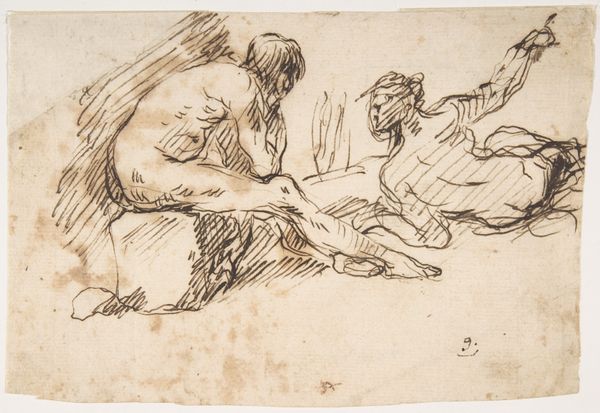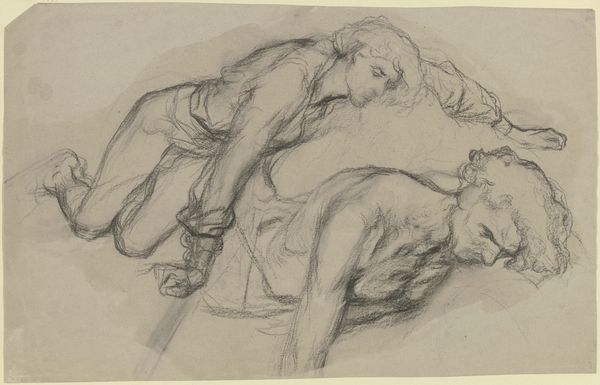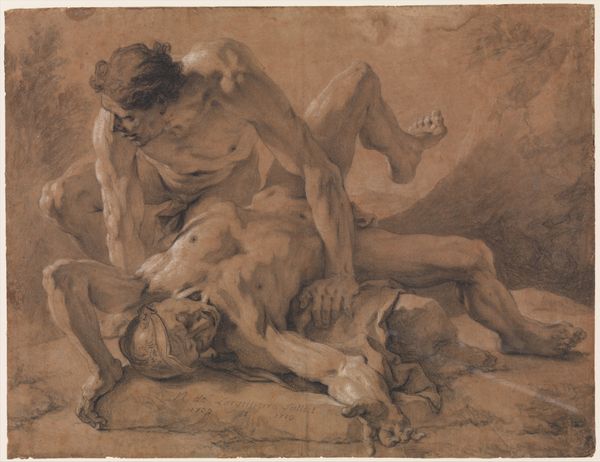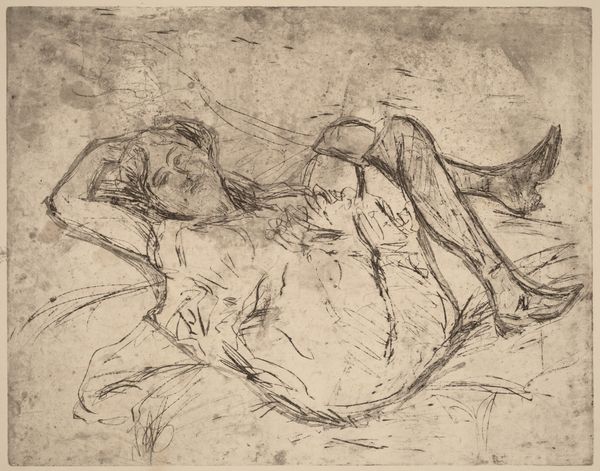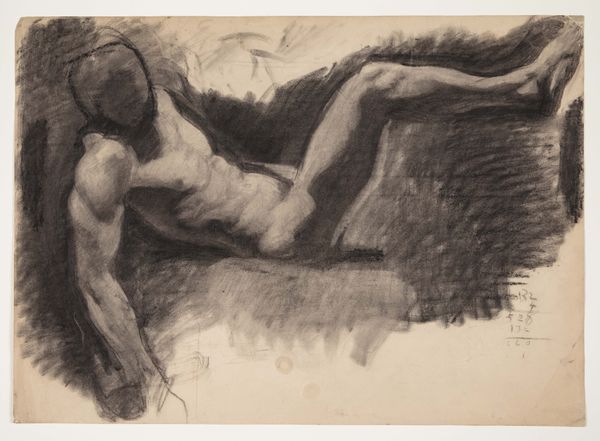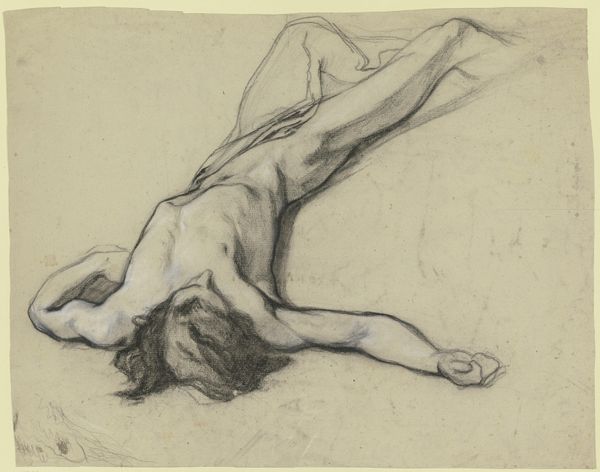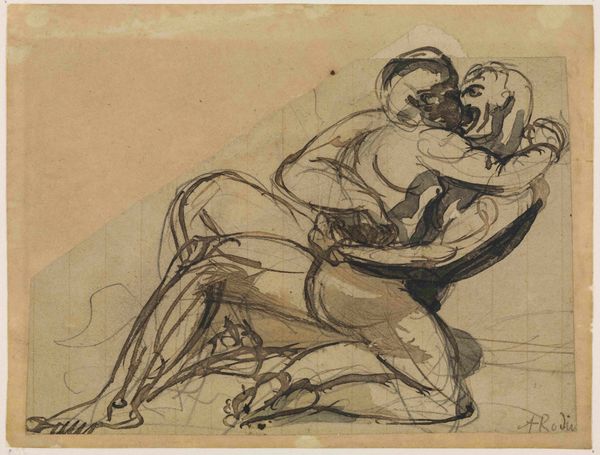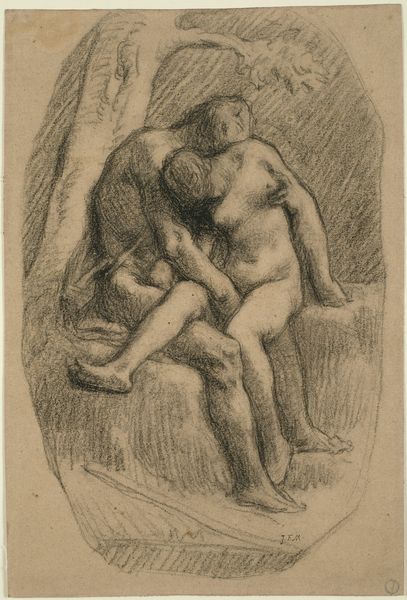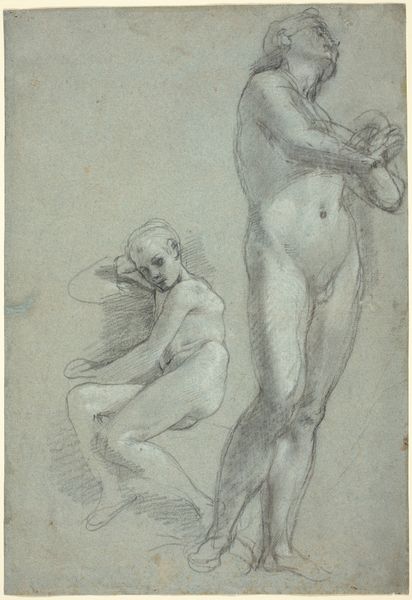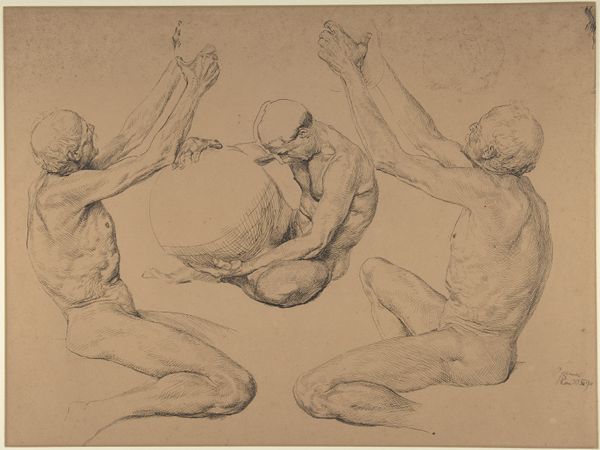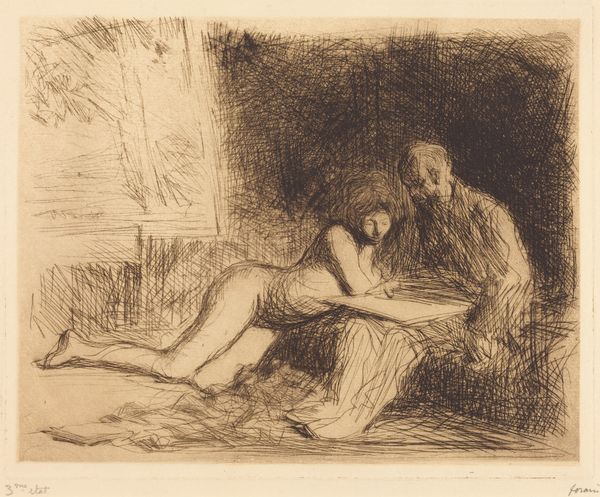
drawing, print, pencil
#
drawing
# print
#
figuration
#
pencil drawing
#
pencil
#
history-painting
#
academic-art
#
realism
Dimensions: 18.8 x 19.9 cm
Copyright: Public Domain
Curator: Andrieux's "Vendéan Fusillé," a pencil drawing created between 1835 and 1880, is a chilling depiction. Editor: Yes, it strikes me immediately as stark, unfinished somehow. The figures seem to emerge from a shadowy ground. There is something very disturbing about their poses, the obvious subjugation of these figures. Curator: Note how the artist uses layered strokes and chiaroscuro effects to give depth and dimension to the figures; the bodies, though simply rendered, demonstrate strong anatomical understanding. Observe especially the foreshortening. Editor: It reads to me as a direct indictment of state-sponsored violence, maybe more broadly. I mean, the men are bound, naked—stripped of any dignity. Is there a correlation here to, say, 19th-century colonial brutality? Who are these men really, in history? Curator: Historical painting became very popular during this era and served to represent current debates with a level of grandstanding and gravitas. Note how the composition pulls the eye towards the main figure on the left and moves from there along the plane. It implies temporality and linearity within the diegesis. Editor: The question becomes, of course, to whose end is Andrieux portraying this "historical" event? I agree it presents some debate. As we bring these issues out of the visual background we also invite an acknowledgement that all figures, victims or aggressors, can only be understood in relation to structures of power, visible in something as small as a drawing or print. Curator: I find myself thinking more about the internal struggle within the figures portrayed, and also how effectively the technique highlights those elements for us. It's an efficient use of dark shading and shadow to represent something so internal, if it could be called that. Editor: Right, well, these historical echoes still resonate. It challenges the accepted grand narratives by presenting a brutal tableau that insists we acknowledge suffering on the margins. Curator: Well, either way, Andrieux provides a hauntingly skillful rendition of the human form within its own strict medium, with echoes and influences from Academic Art and Realism of the 19th century. Editor: A visceral portrayal of how systems, then and now, seek to dehumanize those who resist or are othered by these same violent structures. Thanks to this close study we have come together to understand better.
Comments
No comments
Be the first to comment and join the conversation on the ultimate creative platform.
